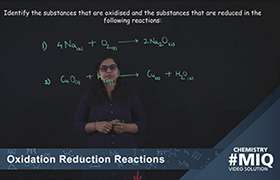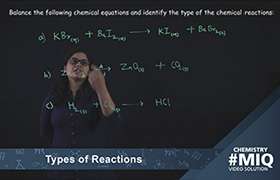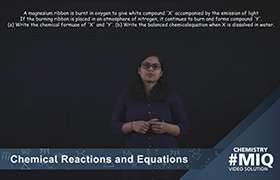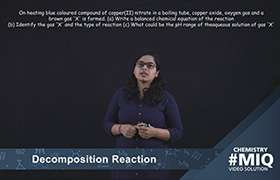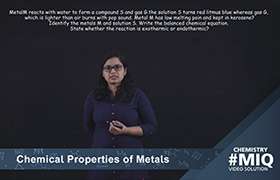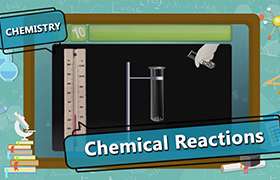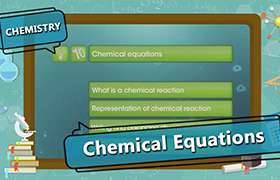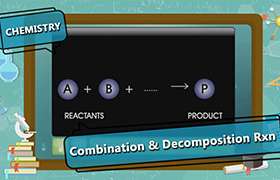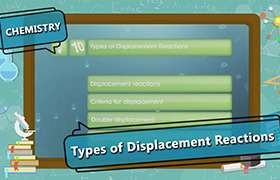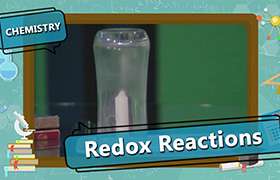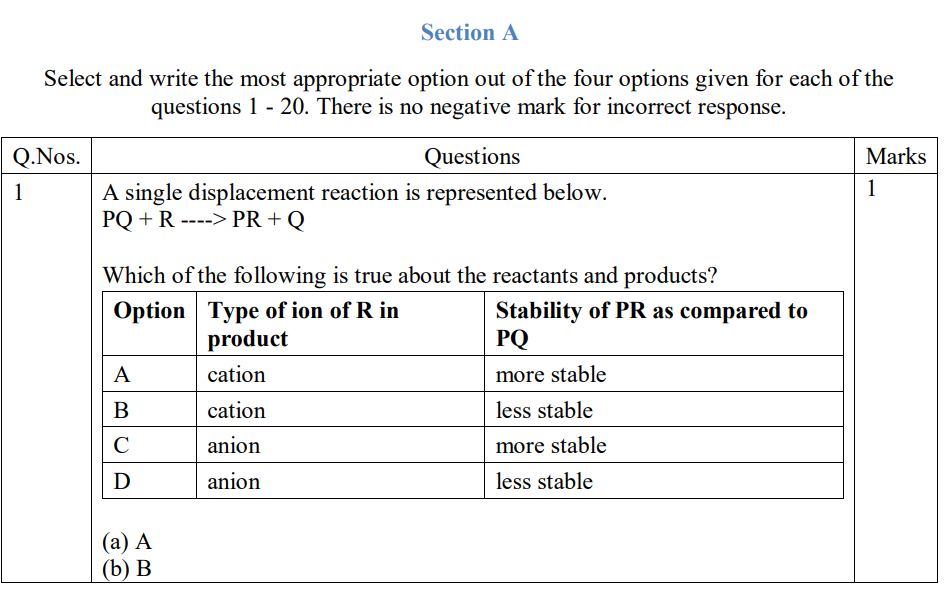CBSE Class 10 Answered
1) Combustion: A combustion reaction is when oxygen combines with another compound to form water and carbon dioxide. These reactions are exothermic, meaning they produce heat. An example of this kind of reaction is the burning of napthalene:
C10H8 + 12 O2 ---> 10 CO2 + 4 H2O
2) Synthesis: A synthesis reaction is when two or more simple compounds combine to form a more complicated one. These reactions come in the general form of:
A + B ---> AB
One example of a synthesis reaction is the combination of iron and sulfur to form iron (II) sulfide:
8 Fe + S8 ---> 8 FeS
3) Decomposition: A decomposition reaction is the opposite of a synthesis reaction - a complex molecule breaks down to make simpler ones. These reactions come in the general form:
AB ---> A + B
One example of a decomposition reaction is the electrolysis of water to make oxygen and hydrogen gas:
2 H2O ---> 2 H2 + O2
4) Single displacement: This is when one element trades places with another element in a compound. These reactions come in the general form of:
A + BC ---> AC + B
One example of a single displacement reaction is when magnesium replaces hydrogen in water to make magnesium hydroxide and hydrogen gas:
Mg + 2 H2O ---> Mg(OH)2 + H2
5) Double displacement: This is when the anions and cations of two different molecules switch places, forming two entirely different compounds. These reactions are in the general form:
AB + CD ---> AD + CB
One example of a double displacement reaction is the reaction of lead (II) nitrate with potassium iodide to form lead (II) iodide and potassium nitrate:
Pb(NO3)2 + 2 KI ---> PbI2 + 2 KNO3
6) Acid-base: This is a special kind of double displacement reaction that takes place when an acid and base react with each other. The H+ ion in the acid reacts with the OH-ion in the base, causing the formation of water. Generally, the product of this reaction is some ionic salt and water:
HA + BOH ---> H2O + BA
One example of an acid-base reaction is the reaction of hydrobromic acid (HBr) with sodium hydroxide:
HBr + NaOH ---> NaBr + H2O

